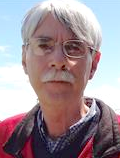Sea Caves Watch promotes kayaker safety in northern Wisconsin
A public safety project initiated by the University of Wisconsin–Madison to prevent kayaking tragedies has been turned over to the National Park Service and several partners.
SeaCavesWatch.org is a real-time wave observation system that provides webcam photos and information about wave height, water temperature and wind speed to kayakers before they venture onto Lake Superior to visit the popular mainland sea caves along the Apostle Islands National Lakeshore. The website is also available via a special kiosk at the boat launch site at Meyers Beach in the national lakeshore.
“Since SeaCavesWatch.org went online, it’s contributed to a reduction in mishaps in the park,” says Dick Carver, who works with the Friends of the Apostle Islands. “We went from four kayaker deaths in a five-year period to none in the past five years.”
The original project was co-led by Chin Wu, a UW–Madison civil and environmental engineering professor, and Gene Clark, a coastal engineer with the University of Wisconsin Sea Grant Institute. Josh Anderson was the lead student researcher on the project.

Chin Wu

Gene Clark
“The original focus was summer wave conditions, but with the addition of the webcam, the system emerged as a vitally important year-round tool, especially in winter 2014, when record visitation to the ice-covered caves made international news,” says Bob Krumenaker, Apostle Islands National Lakeshore superintendent.
The National Park Service recently incorporated the website into its regular work plans. “It’s changed our park protocols,” says Krumenaker. “We’ve made a commitment to the system and plan to continue it in the long term. Before our staff go out to the caves or before we open the caves to the public in the winter, our motto is, ‘Check the camera first.'”
The sheer cliffs and possibility of high waves in the sea caves make them dangerous under certain conditions, because it becomes impossible for kayakers to get out of the water if they get into trouble.
“There’s a misconception that because the caves are close to shore, they’re safe,” says Tam Hofman, a ranger at Meyers Beach. “But conditions can change quickly out on the lake, especially near the rock cliffs and caves, and you can’t always see that from the launch site.”
“Before our staff go out to the caves or before we open the caves to the public in the winter, our motto is, ‘Check the camera first.’”
Bob Krumenaker
The website is accessed about 96,000 times per year. According to Clark, the webcam was originally meant as an experimental way to monitor wave conditions at the caves. “But now it’s invaluable,” he says. “We didn’t have that vision at first.”
Under the new agreement, Wisconsin Sea Grant will continue to provide coastal engineering expertise and outreach assistance as needed for the next five years.
The project has also helped Wu to begin developing methods for detecting and forecasting rip currents elsewhere along Wisconsin’s coastline.
“The goal was to make people using the caves feel safe,” says Wu. “It’s been gratifying to be part of a project that’s had an impact and has made a difference.”
SeaCavesWatch.org was originally funded by the National Oceanic and Atmospheric Administration, the Wisconsin Coastal Management Program and the Friends of the Apostle Islands, with support from the City of Bayfield. The National Park Service was involved in the project from the onset and provided significant in-kind support.
—Marie Zhuikov
Subscribe to Wisconsin Ideas
Want more stories of the Wisconsin Idea in action? Sign-up for our monthly e-newsletter highlighting how Badgers are taking their education and research beyond the boundaries of the classroom to improve lives.
